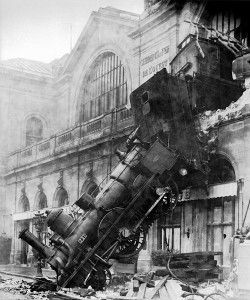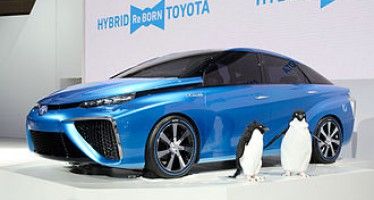Rail Program In Deep Doo-Doo
You know a massive government program is in trouble when even its hand-picked “working group” of insiders starts crying foul. This is exactly what happened to the increasingly troubled California High-Speed Rail Authority (CHRSA) earlier this month.
Already suffering under the weight of critical activist groups, multiple state audits and a growing number of skeptical legislators, the rail authority took one on the chin from its own High-Speed Rail Independent Peer Review Group.
Created by Proposition 1A in 2008 (and not to be confused with the Ridership Peer Review Group, which was created much later), the Independent Peer Review Group consists of eight members (two positions are open) appointed by various state officials such as the state treasurer and the secretary of the Business, Transportation and Housing Agency.
Though formed way back in early 2009, the group didn’t release its first report until November 2010. The report was generally critical of the effort to build 800 miles of bullet trains at a cost of at least $43 billion.
Questions
On May 2 of this year, they fired off a six-page letter to CHSRA Executive Director Roel of van Ark that listed a whole lot of questions and criticisms. Though buried in the letter, the most important of these observations dealt with the project’s exploding cost.
“We believe the Authority is increasingly aware of the challenge of accurate cost estimating,” wrote Peer Review Group Chairman Will Kempton, the current CEO of the Orange County Transportation Authority and a former Caltrans director in a May 2, 2011 letter obtained by the Palo Alto-based Californians forResponsible Rail Design. “However, as the Authority stated, ‘[o]verall capital costs are trending upwards’.”
What’s more, Kempton says his group “does not yet see the establishment of a state-of-the-art cost estimating and budget management system that would permit immediate incorporation of actual experience as it emerges.” Since a mere 15 percent of the design plans have been completed so far, “this does not furnish a solid base for confidence in cost estimates, either for the estimated amounts or for the range of variation likely to be experienced.”
For that reason, Kempton urged the authority to “make every effort to state and qualify its estimates accordingly so that the public will understand that the $43 billion total is still avery preliminary estimate that could ‘trend upwards’.”
Translation: the $43 billion cost estimate stands nowhere near reality.
Another chilling finding from the Working Group was the rather cavalier way in which it states that, pretty much no matter what, the bullet train will not make any profit in its first years and will require some sort of public subsidy.
Support from Taxpayers
In fact, Kempton says the group believes it is “unreasonable” not to provide some kindof “support” to the project in its earliest years. “If the Legislature’s intent was that the entire project, at all stages, be financially profitable including payback of State bonds and all investment, then we agree with the Authority’s position that neither this project, nor any other HSR system (with the possible exception of the Tokaido Line in Japan and the Paris to Lyon TGV line) could meet this standard,” Kempton wrote. He apparently (and conveniently) forgot that profit at all stages was exactly the line fed to Prop. 1A bond voters back in 2008.
Kempton and his group also noted that rail authority staff is much too small to deal with so many contractors, right-of-way acquisition is going to be way more expensive than can be known at present and, of course, the authority needs to keep working on that ridership model — you know, the one that UC Berkeley transportation engineers said was bunk.
And Kempton also offered an unsubtle reminder that the rail authority needs to get some kind of final business plan — which should include a reasonably accurate cost estimate — by October 14 of this year. That so many years have gone by without such a document exemplifies the madness that hangs over the project, which will be either the largest capital works project or boondoggle in California history.
At this point, the latter looks most likely to be the case.
– Anthony Pignataro
Related Articles
Feds funnel money to CA hydrogen cars
The hype surrounding electric cars is running out of gas — and the Department of Energy is directing funds toward hydrogen.
CA Politicians Gorging On Taxpayers
MAR. 13, 2012 Like a fat tick feasting on an unsuspecting dog, California government just grows and grows. While governments
NRDC claim of ‘no government-made drought’ doesn’t hold water
Water moves in one direction, memory in another for the National Resources Defense Council. The NRDC seems to be suffering





